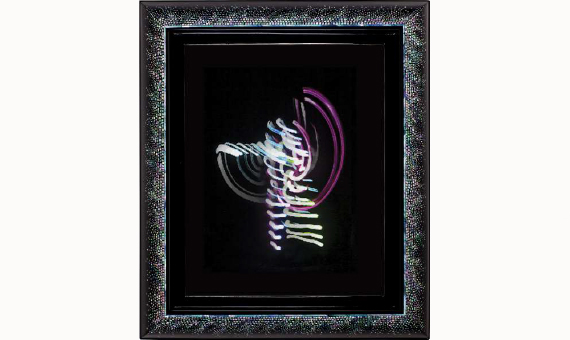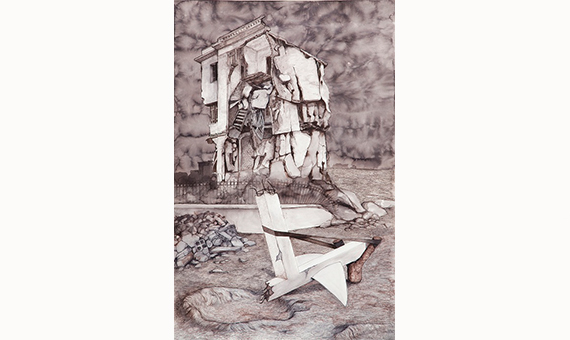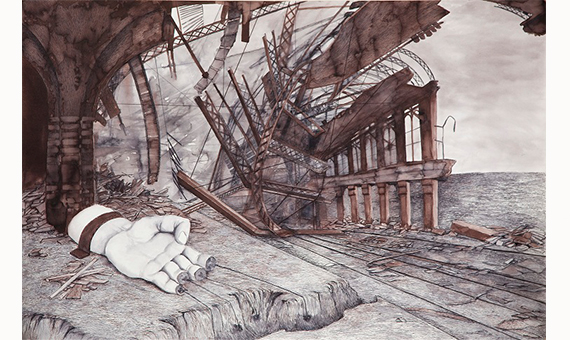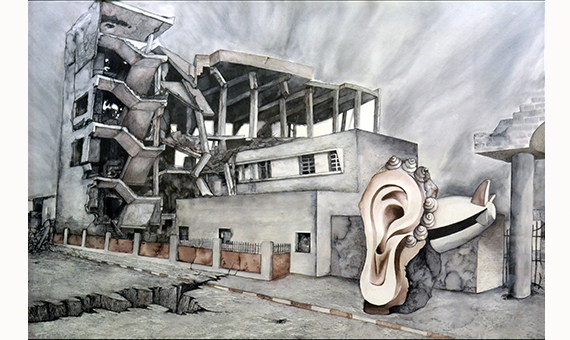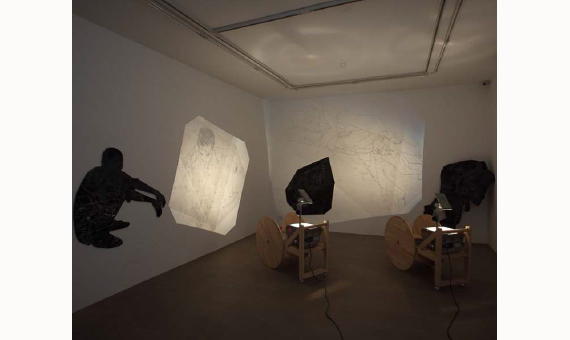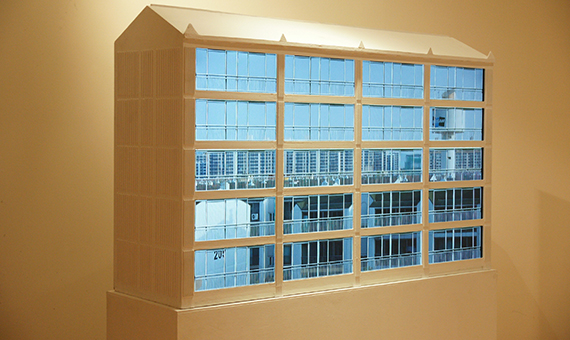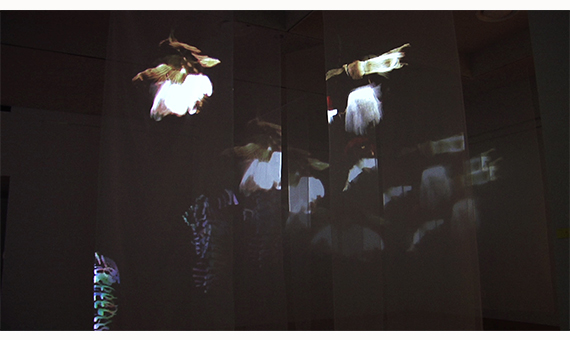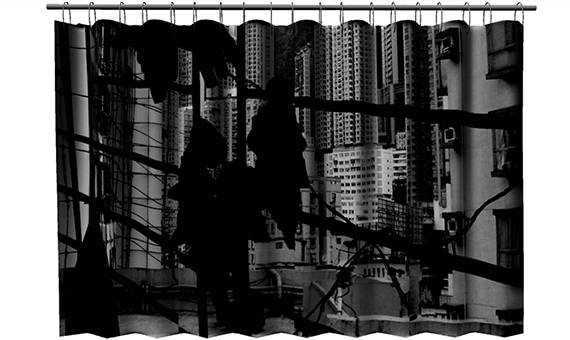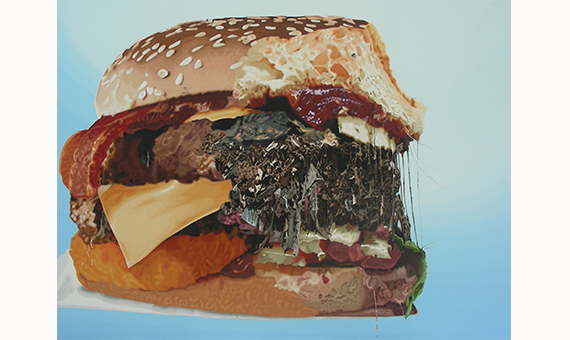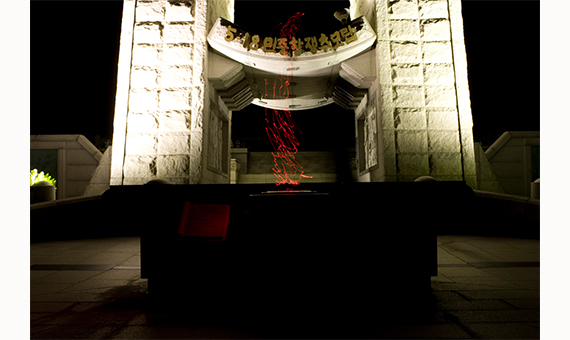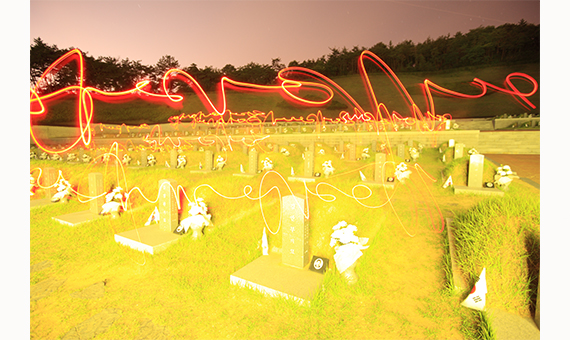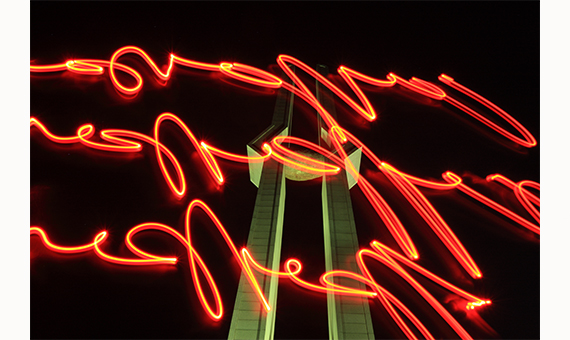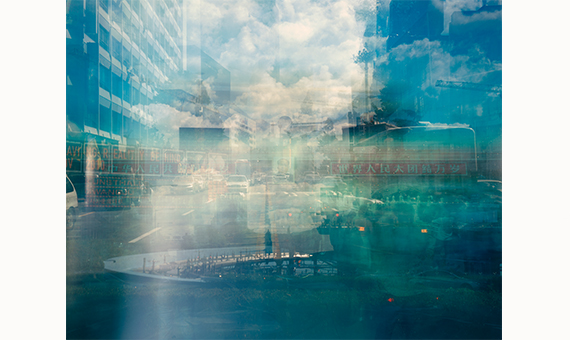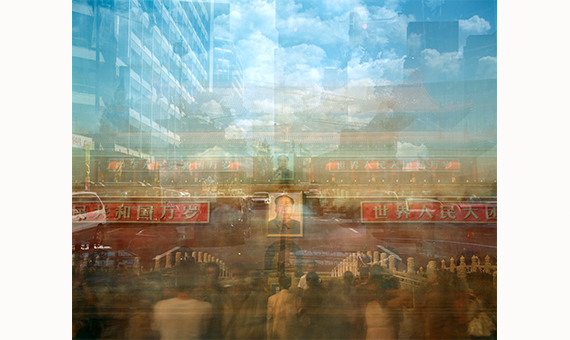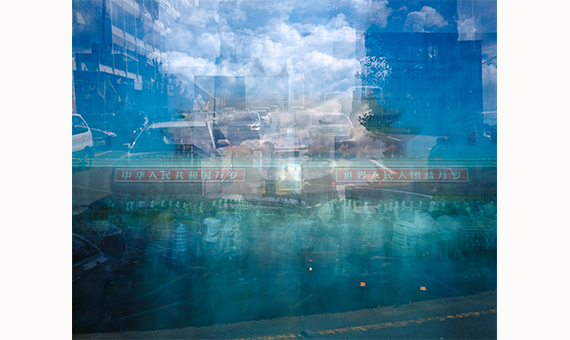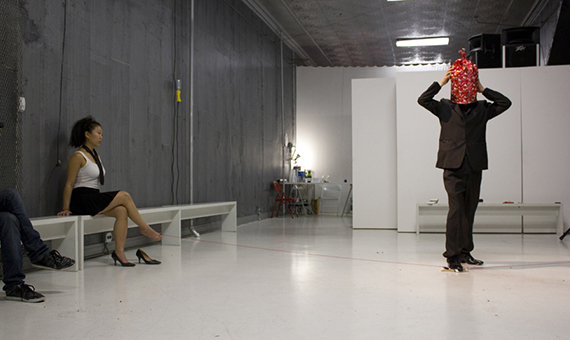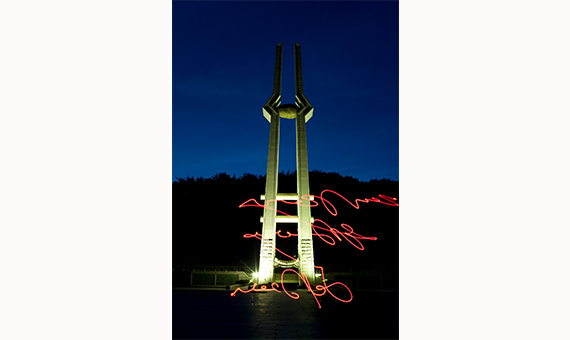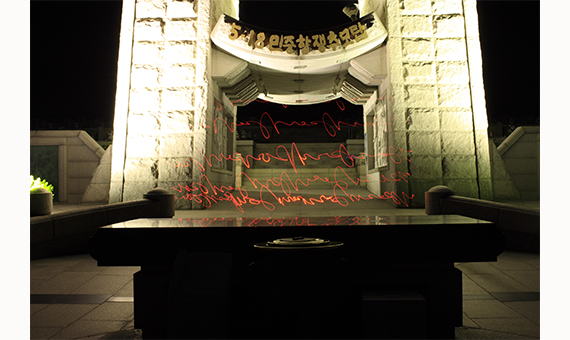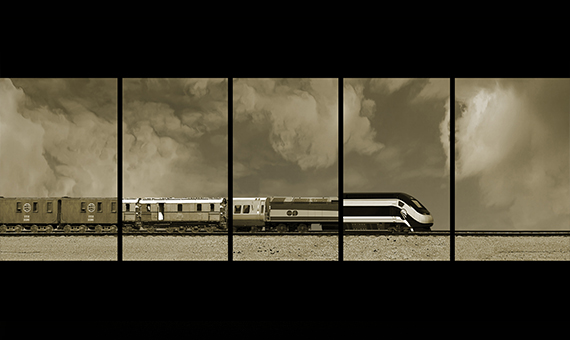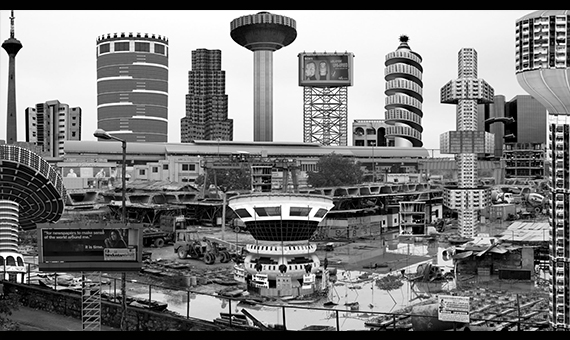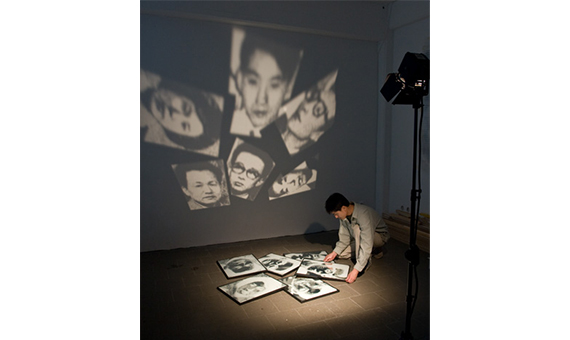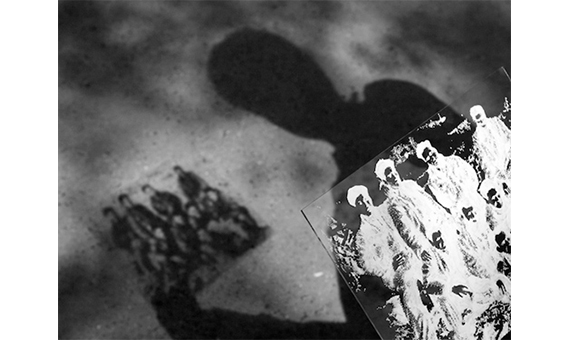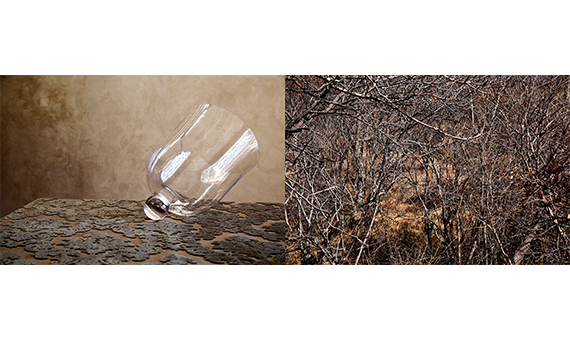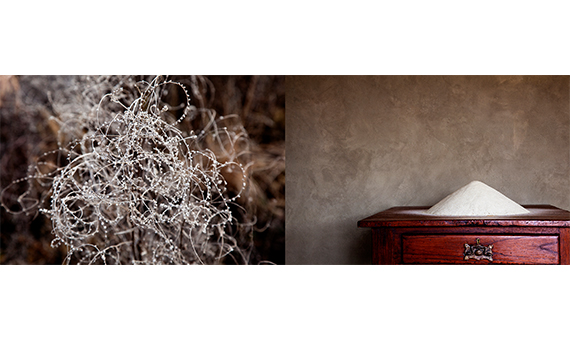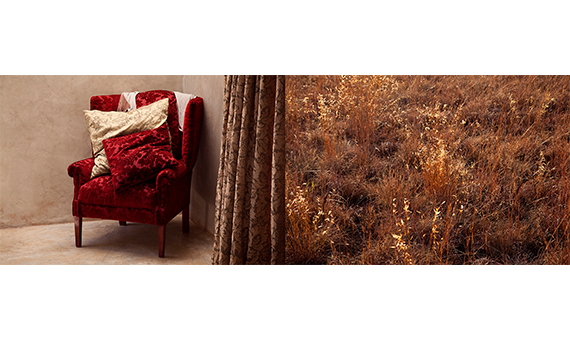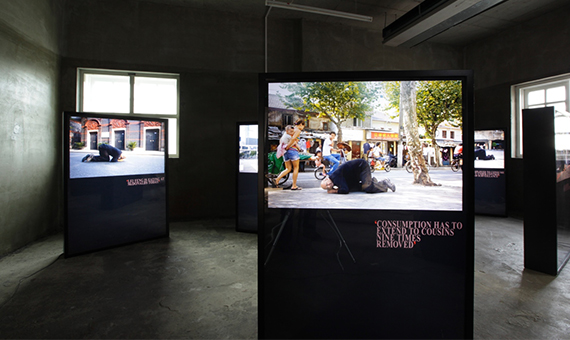About the Artists
Atul Bhalla
Atul Bhalla finished his graduation at the College of Art, Delhi University, New Delhi and Post-graduation at School of Art, Northern Illinois University, USA. A few of his major show include On the Edge, a solo show of works from 2009-11; Vadehra Art Gallery, New Delhi, Oct 2011; Water Works, curated by Donna Gustafsson, Sept-Oct 2011 at Grossman Gallery, Lafeyette College, Easton, PA. USA; Installation of 'I was not Waving but Drowning-II' at Harvard Art Museums, Cambridge MA. USA. (December 2010-April 2011); Yamuna Elbe Project: Hamburg-Delhi, Site specific Installations on both Rivers, curated by Till Krause, Ravi Agarwal, Oct Nov 2011; Beyond the Self: Contemporary Portraiture from Asia 13 Aug - 6 Nov 2011, curated by Christine Clarke. National Portrait Gallery, Canberra, Australia, Paris Delhi Bombay, India Though the Eyes Of Indian and French Artists- Centre Pompidou, Paris, France curated by Sophie Duplaix and Fabric eBosteau, May 22 September 19 2011 God, Goddesses, Cinema and Cricket, curated by Arshiya Lokhandwala, Jehangir Art Galleries, Mumbai India, Feb 22, 2011; Immersions, curated by Deeksha Nath, Anant Art Gallery, New Delhi, India; Monographic exhibition of recent works, KHOJ-International Artists Association, New Delhi, India 2005; Slipping Between the Cracks, curated by Meera Menezes, Latitude 28 New Delhi 2012; India Moderna curated by Juan Guardiola, IVAM Institute of Modern Art, Valencia, Spain and Video Zone-4 curated by Sergio Edelsztein and Rotem Ruff, 4th International Video Art Biennial, Israel 2008; Self x Social curated by Geeta Kapur, School of Art and Aesthetics, Jawaharlal Nehru University, New Delhi, 2005; West Heavens: Place Time-Play: India China Contemporary Art, curated by Chaitanya Sambrani, Shanghai China. Water, curated by Donna Gustafson, Andrew W. Mellon, Zimmerli Art Museum, Rutgers, USA; ID/ENTITY, curated by Vidya Shivdas, Vadehra Art Gallery. New Delhi; A Monumental Tour, curated by Cho Seong Ryeong, Coreana Art Museum, Seoul, Korea. INDIAN (SUB) WAY, curated by Yashodhara Dalmia, Grosvenor, Vadehra, New Delhi, London, 2010. Bhalla was a participant of the Fourth Asian Art Triannale, Fukuoka Asian Art Museum, Fukuoka, Japan. His recent publication includes Yamuna Walk (Atul Bhalla/ Sepia Eye Publications, University of Washington Press, Seattle and London 2012). His works have been collected by the Harvard Art Museum, Cambridge, USA; Devi Art Foundation, Gurgaon, India; Fukuoka Asian Art Museum, Japan; Kiran Nadar Museum of Art, New Delhi, India.
Changwon Lee
Changwon Lee was born in Incheon, South Korea in 1972. He finished his graduation at the College of Fine Art, Seoul National University and attained his Diploma from the Academy of Fine Arts, Münster, Germany. He has received several prestigious awards including the Audience Award, 58. Bergische Kunstausstellung, Museum Baden, Solingen, Germany in 2004; the DAAD Prize for outstanding achievements by international students at German universities in 2006; The Excellent Art Project, Gyeonggi Cultural Foundation, Korea in 2011 and the Artist Fund for international exchange projects on culture and art, Arts Council Korea Invite New Artists 2008, Public Art Magazine, Seoul in 2008. Among his solo shows include the MAM Project 017, Mori Art Museum, Tokyo, Japan; Other Selves, Alternative Space Loop, Seoul, Korea in 2012; Disappear Aando Fine Art, Berlin, 2009; Schatten der Helden Fiebach, Minninger, Cologne, Germany, 2008; Changwon Lee - Recent Works, Kusseneers Gallery, Antwerp, Belgium, 2003. His notable group shows include Festival O! Gwangju Media Art 2012, Art Flash, COEX, Seoul, Korea 2012; Great Art Exhibition NRW, Museum Kunstpalast, Düsseldorf, Germany;Bad Romanticism, Arko Art Center, Seoul, 2011; Pleasure Ground, Lokaal 01 Breda, the Netherlands; Present from the Past, Korean Cultural Center UK, London, 2010; Shared. Divided. United, NGBK (Neue Gesellschaft fur Bildene Kunst e.V), Berlin; From Memory―About knowing and forgetting, Museum Dr. Guislain, Gent, Belgium; Emerging Korean Artists in the World 2009_ U.S.B, Hangaram Art Museum, Seoul Arts, 2009.
Gigi Scaria
Born in Kothanalloor, Kerala, India in 1973, Gigi Scaria finished his Bachelors Degree from the College of Fine Arts, Thiruvananthapuram and a Postgraduation from Jamia Millia University, New Delhi. Among a few of Scaria's solo shows are Open windows closed boundaries, Dubai art fair, Gallery Chemould, Mumbai 2010; Amusement Park, Chemould Prescott Road, Mumbai, India, and Settlement, Galerie Christian Hosp, Berlin, 2009; Site Under Construction, Videospace Budapest Gallery, Budapest and Triviality of everyday existence, recent photographs and video, The National Art Studio, Changdong, Seoul, Korea, 2008; Absence of an Architect, video installations paintings and photographs at Palette Gallery New Delhi; Where are the Amerindians? At Inter America Space at CCA7, Trinidad 2005. Scaria has participated in a number of group shows as well including the Indian Pavilion of the Every one agrees: it's about to explode, curated by Ranjit Hoskote, India Pavilion at 54th Venice Biennale, 2011; Tolstoy Farm : Archive of Uttopia, Curated by Gayatri Singha; 3rd Singapore Biennale, curated by Russell Storer and Trevor Smith, 2011; The Black Cube, Video art festival curated by Johny M L. This program was a part of the international documentary film Festival at Trivandrum,Kerala; The Way We Are, curated by Oindrilla Maity, Mon Art Gallery, Calcutta; Snow, curated by Ranjit Hoskote, Palette art Gallery, New Delhi and Tao Art Gallery, Mumbai; By George, Curated by Gitanjali Dang; Volta Art Fair New York, Video Space, Budapest, Hungary; VIDEO Silvasa art gallery, DN&H, curated by Johny M L in 2010; Self x Social Self stranger parent resource worker, School of Arts and Aesthetics Gallery, New Delhi, curated by Geeta Kapur, 2005, just to name a few.
Gim Gwang Cheol
Hi shows include We Are, curated by Oindrilla Maity, Mon Art Gallery, Calcutta; Snow, curated by Ranjit Hoskote, Palette art Gallery, New Delhi and Tao Art Gallery, Mumbai; By George, Curated by Gitanjali Dang; Volta Art Fair New York, Video Space, Budapest, Hungary; VIDEO Silvasa art gallery, DN&H, curated by Johny M L in 2010; Self x Social Self stranger parent resource worker, School of Arts and Aesthetics Gallery, New Delhi, curated by Geeta Kapur, 2005, just to name a few.
Kim Young Tae
Kim Young Tae was born at Gokseong-gun, Jeonnam, Korea in 1971. He is a fellow of the Dept. of Fine Arts, College of Arts, Chonnam National University. His solos include Shadow Land (Shinsegae Gallery, Gwangju), 2010 and Breathing (Shinsegae Gallery, Gwangju, Incheon), 2002. He is a participant of the The 3rd International Contemporary Art Gwangju Art Vision at the Gwangju Biennale, 2012. Young Tae has participated in numerous group shows in the Far East and Europe. He is the recipient of the Shinsegae Art Prize, 2001.
Prajakta Palav
Prajakta Palav Aher was born in 1979 in Mumbai and holds a Graduation and Post graduation from Sir J J School of Art, Mumbai. Among her many group shows inlcude ARCO curated by Bose Krishnamachary at the London Art Fair, (Vadhera Art Gallery), 2009; Landscapes of Where, curated by Nancy Adajania at the Mirchandani and Steinruecke, Mumbai, 2009; If I were a Saint curated by Johny M.L. at the Shrine Empire, Delhi, 2009; 'AvantGarde' at the Guild Art Gallery, New York, 2009; Kiran Nadar Museum of Art (KNMA), Noida. Cynical Love: Life In The Everyday curated by Gayatri Sinha at the Kiran Nadar Museum 2012; The Guild Art Gallery, Mumbai; Constructed Reality curated by Gayatri Sinha, 2011; Of Gods and Goddesses, Cinema, Cricket curated by Arshiya Lokhandwala, 2011, Jahangir Art Gallery, Mumbai are only a few. Her solo shows include Sprouting Beads at Grosvenor & Vadhera Art Gallery London, 2010; and 'Jelly With Nuts' at Art HongKong 2012 at Latitude 28 are notable.
Praneet Soi
Emerging as a prominent Indian artist, Praneet Soi (b. 1971, Kolkata, West Bengal, India) currently divides his time between Amsterdam and India. Praneet Soi participated in the first curated Indian National Pavilion at the 54th International Art Exhibition - La Biennale di Venezia in 2011. The Indian Pavilion, located in the Arsenale, featured four artists and was curated by Ranjit Hoskote. Soi's work for this pavilion involved a large-scale mural accompanied by a slide installation, Kumartuli Printer, Notes on Labor part 1 and a work-station. A monograph, the artist's second, was released at this time. It included texts by Charles Esche and Ranjit Hoskote. The monograph was designed by German graphic designer Manuel Raeder. Soi has attended the Rijksakademie van beeldende kunsten, Amsterdam(2002-2003); Skowhegan, Maine(2001); University of California, San Diego(1999-2001) and the Faculty of Fine Arts, Baroda, India(1990-1996). He works in a wide range of media, spanning painting, drawing, collage, text, audio-visual assemblages and recently, performance- ectures. Recent exhibitions include Manifesta 9 in Genk, Belgium and It doesn't have to be beautiful unless its beautiful, in the National Gallery of Kosovo in Prishtina. He has exhibited in Centro Cultural Montehermoso Kulturunea, Vitoria-Gasteiz; Artspace, Sydney; de Appel, Amsterdam; Museo Experimental El Eco, Mexico City. His work was shown recently at CIMA, Kolkata, 2011; Vadehra Art Gallery, New Delhi, 2010; 1st Ural Industrial Biennial, Ekaterinburg, 2010; 14th Vilnius Painting Triennial, CAC, Vilnius, 2010; CACSA, Adelaide, 2010; Galerie Martin Van Zomeren, Amsterdam, 2009; Van Abbe Museum, Eindhoven, 2009 and the 7th Gwangju Biennale, South Korea, 2008. Soi's work was featured at numerous art fairs over the past few years such as Liste, Basel; Armory Show, New York; Art Rotterdam, Rotterdam; Arco, Madrid; Fiac, Paris; Art Summit, New Delhi, and Art Cologne. His work is a part of prominent collections in India and abroad.
Sanghwa Park
Born in the 1970s, Park Sanghwa is among one of the most notable artists in New Media practice in Gwangju, South Korea. A fellow of the Mokpo National University and Chosun University in South Korea, Park is also a founder member of the Bibim Baap, a group of New Media practitioners, which was a participant in the Gwangju Biennale, 2012. Park has participated in countless group shows and solos in Gwangju. His works are instrumental in understanding the demands and desires in the post-war Korean society and its anxieties and values. Park's works are intense comments on a nation's journey (which once comprised of majorly Buddhist practitioners) from nature to culture.
Siyon Jin
Siyon Jin was born in 1971 in Gwangju, South Korea. He graduated from the Chosun University and later finished a second Postgraduation in New Forms from the Pratt Institute, New York. Jin's works are noted for continuing the legacy of Nam June Paik and his mediation between past and present in a crucial moment of the nation's transition to transform itself as a super power (Gwangju is already at the verge of becoming a UNESCO city). Jin's LED public sculptures are owned by some of the most prominent museums and corporate houses in South Korea, such as the SIGN LED panel for the Media Façade, Lotte Department Cheongnyangni; Linking Spot at the DaeJeon Daedeok Business Herb Center Media Façade. Jin has participated in numerous solos and group shows all over South Korea. FLOW amongst them all is perhaps the most popular and well known. Jin was chosen as the Artistic Director for Festival O! Gwangju, 2012, the grand scale public display of New Media art in Gwangju this year. A large section of the artist's work can be seen at Saatchi Online's website.
Tushar Joag
Tushar Joag was born in Mumbai in 1966. He completed his Bachelors in Fine art in 1988 (Sir JJ. School of Art, Mumbai ) and Masters in 1990 (M.S. University, Baroda). After spending two years (1998 to 2000) at the Rijksakademie van Beeldende Kunsten, Amsterdam, The Netherlands, he returned to Mumbai and co-founded the artists initiative Open Circle in 2000. He has been involved in organizing and co-ordinationg activities in Mumbai and for the World Social Forum in Brazil and Kenya. He has participated in a number of national and international exhibitions and currently lives and works in Mumbai.

